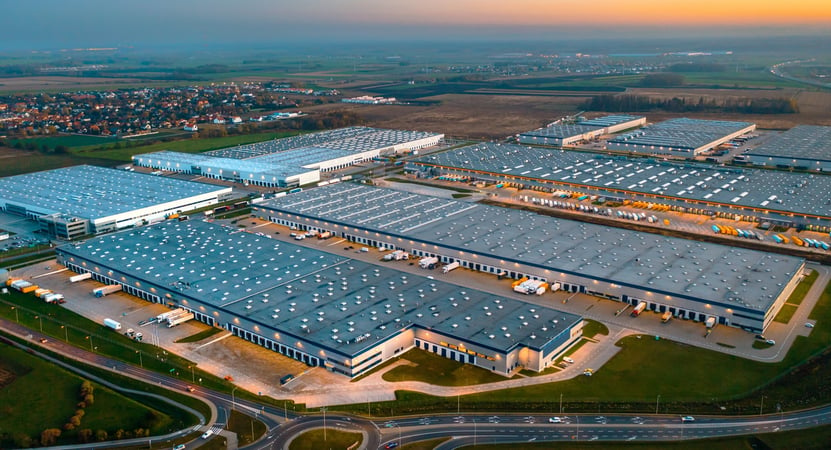
Exploring the Impact of Facility Management Technologies
The discipline of facility management has long been crucial for the seamless operation of physical assets and workspaces. Still, it has undergone a significant transformation recently, propelled by technological advancements. This evolution has moved the industry from relying on manual oversight to sophisticated, tech-driven operations, marking a pivotal shift and reshaping how facilities are managed while streamlining facility management operations.
The Rise of Facility Management Technology
Facility management technology has transitioned from rudimentary tools to complex systems integrating the Internet of Things (IoT), Artificial Intelligence (AI), and data analytics. While the initial focus of the new wave of facility management technology was on automating routine tasks, technologies have now advanced further and instead focus on data, allowing you to tap into comprehensive solutions across areas such as predictive maintenance, energy optimisation, and space optimisation, all of which are utilised by real-time data.
What facility management technologies are making the most significant impact?
1. Building Information Modelling (BIM)
Building Information Modelling (BIM) software allows you to digitally recreate your facility's physical and functional characteristics. In effect, BIM allows you to create a digital twin of your facility, which can be used to improve maintenance work, boost tenant satisfaction, and more.
It provides a central point for information that can connect different systems. For example, specialist medical equipment in a facility that moves around can be more easily tracked using a digital twin, allowing you to manage your assets better.
What Benefits Does BIM Provide?
- Enhanced Collaboration: BIM enables smooth cooperation among different teams in your facility, creating a more unified environment for project development.
- Increased Efficiency: Project management efficiency is improved by providing precise and comprehensive information on assets and projects, which helps reduce time and cost.
- Improved Sustainability: BIM can assist in creating sustainable and energy-efficient buildings through detailed analysis and simulation.
2. Energy Management Systems (EMS)
Energy Management Systems (EMS) are software systems that allow you to monitor, control, and optimise energy use throughout your facility. Through sensors, you can gather real-time data on energy use, which the software then analyses and uses to provide in-depth reporting. The software can also automatically adjust systems such as lighting and HVAC to manage energy use in areas that do not need energy spent.
Benefits of EMS
- Reduce Energy Use: Lower your energy expenses by optimising energy use throughout your facility.
- Carbon Footprint Reduction: EMS helps minimise carbon usage by focusing on efficient energy use and reducing waste throughout your facility.
- Real-time Monitoring and Control: Allows for immediate adjustments in energy use to boost efficiency, thanks to real-time monitoring capabilities.
3. Computer-Aided Facility Management (CAFM)
Computer-aided facility Management (CAFM) is specialist software that allows you to effectively and efficiently assist in the management of your facility across a range of different areas. It is a centralised database for space utilisation data, asset registries, and reporting.
Benefits of CAFM
- Operational Efficiency: Streamline your facility management tasks through automation, enabling you to focus on strategic planning and decision-making.
- Resource Optimisation: Maximise the productivity of your team members and resources through scheduling planners and job tracking software.
- Improved Maintenance Planning: Make maintenance planning simple with detailed tracking and scheduling of maintenance activities.
IoT and Smart Buildings
Integrating the Internet of Things (IoT) in buildings transforms conventional structures into smart buildings. By leveraging connected devices and sensors to collect data and automate various processes and tasks, you can enhance the building's efficiency, security, and comfort.
IoT sensors and systems are part of many modern facility management technologies and form the basis of many technologies discussed as beneficial for facilities management. Some of the most common variants are smart thermostats, which allow you to adjust temperature controls remotely based on occupancy, weather conditions, and more.
With enough software and systems connected to the Internet of Things, a building will eventually become classified as a Smart Building.
Benefits of IoT and Smart Buildings
- Enhanced Operational Efficiency: It automates routine tasks and optimises building performance, leading to significant energy savings, and reduced operational costs.
- Improved Occupant Comfort: Ensures occupants a more comfortable and productive environment by dynamically adjusting building conditions.
- Increased Sustainability: By optimising energy use, you can reduce energy waste, allowing smart buildings to play a crucial role in environmental sustainability efforts.
- Data-Driven Insights: The data collected by IoT devices can be analysed to gain insight into usage patterns, helping to make informed decisions on space utilisation and energy use.
AI and Automation
One of the most significant shifts in facility management technology comes through the application of artificial intelligence (AI) and its combination with automation. With AI, software and technology can understand data connected through the IoT and identify actions that need to be taken to optimise the facilities management. Through AI and automation, all the systems discussed above can be made even more efficient by removing the need for manual action in analytics, assessment, and task setting.
Benefits of AI and Automation
- Increased Efficiency and Reduced Costs: Automating repetitive tasks and AI-driven optimisation leads to significant operational savings.
- Enhanced Predictive Maintenance: AI algorithms analyse sensor data to predict and prevent equipment failures, extending the life of assets and avoiding costly repairs.
- Improved Occupant Experience: AI can tailor the building environment to individual preferences, enhancing comfort and satisfaction.
- Sustainability: AI and automated systems are crucial in reducing energy consumption and carbon footprint by ensuring that building operations are as efficient as possible.
Integrating AI and automation in facility management can streamline operations and create new opportunities for energy savings, predictive maintenance, and personalised services. As personalized technologies continue to evolve, they will undoubtedly shape the future of building management and the experiences of those who use them.